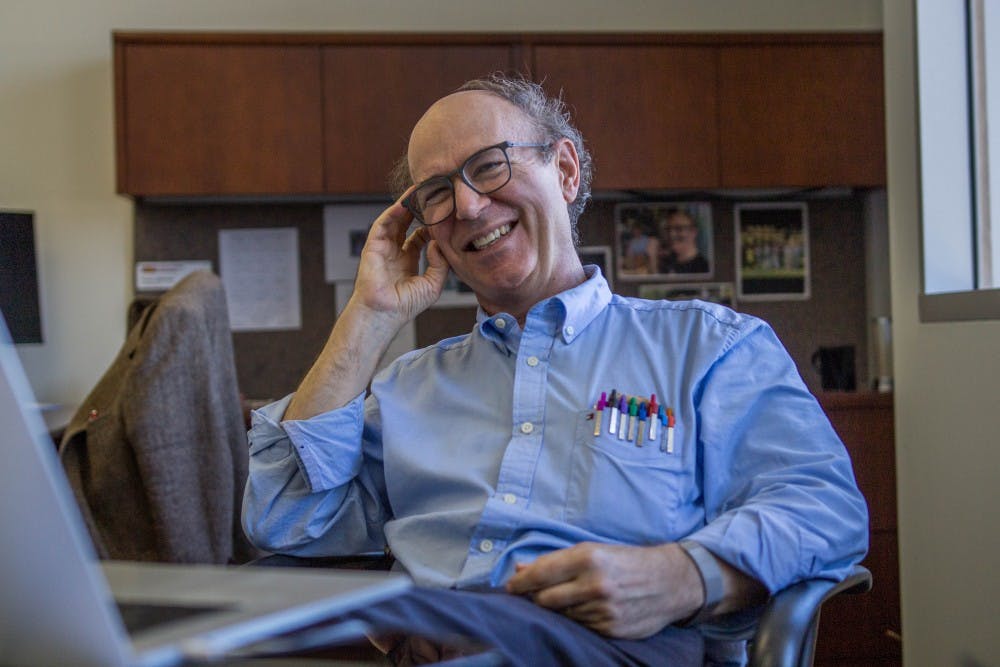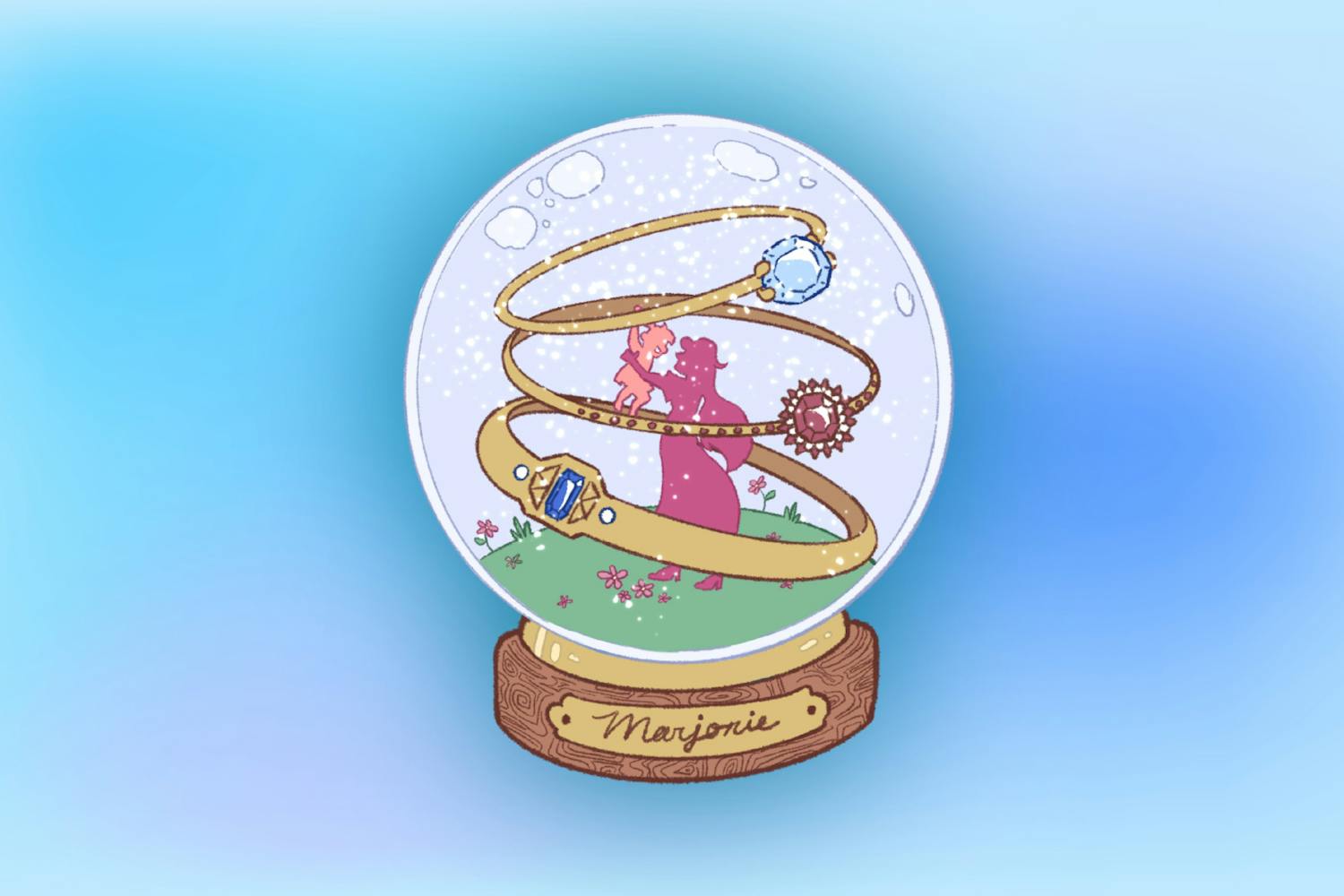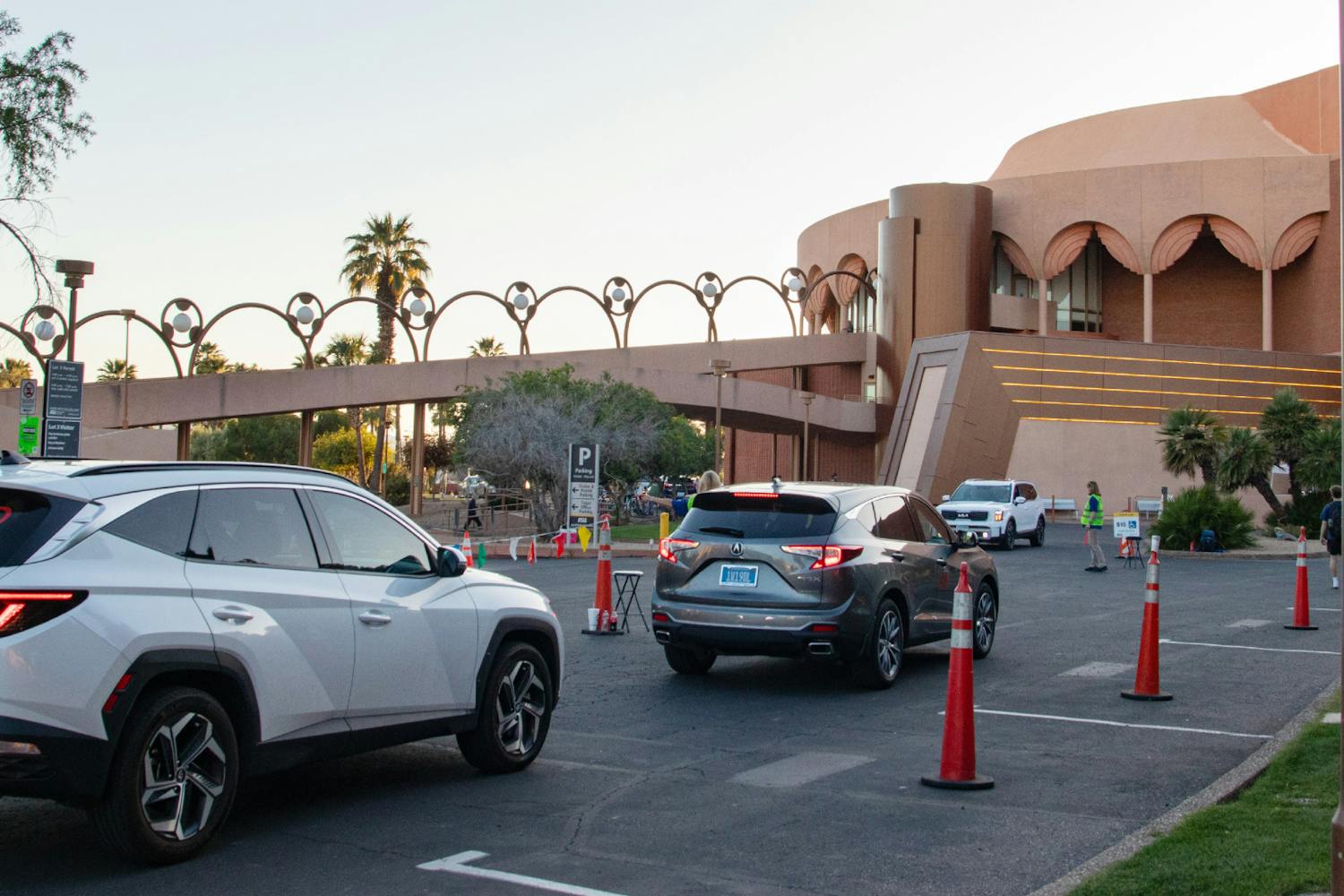ASU Professor Frank Wilczek’s “eureka” moment for his Nobel Prize-winning discovery of asymptotic freedom did not come when he had his breakthrough in the equation in 1973 — he simply went to bed after that.
His “eureka” moment instead came at his first physics conference when one of his heroes, fellow Nobel laureate physicist Richard Feynman, dedicated his summary talk to Wilczek’s discovery.
Today, Wilczek, a research professor for the Origin Project as well as the Department of Physics, teaches a 400-level and graduate course at the Barry M. Goldwater Center for Science and Engineering at ASU. At the moment, his research seems to float on the line between reality and imagination as he dives into the expansion of color perception, the journey to find hypothetical particles and the discovery of time crystals (yes, that's what they're actually called).
Wilczek, although soft-spoken, beams with wonder and a far-eyed gaze through wayfarer frames when talking about fundamental particles like bosons and gravitons.
“I think quantum mechanics is magic, it’s so different,” Wilczek said. “The quantum world to me is in many ways richer, more fun to play with, just because it has this element of fantastic-ness that takes you away from everyday life and really requires you to use your imagination.”
In his office, a cherry blossom painting sent from China is pegged on the wall beside his desk, and one student asked if she could take a photo with him after a graduate student research meeting dispersed. The breast pocket of his dress shirt held magenta, aqua, black, red, orange, blue and green gel pens that must've weighed a ton. Wilczek is bald except for some salt and pepper, but mostly salt, hair on the sides and back of his head.
A disciplined yet modest presentation for a man of such international importance.
He also works as a professor at the Massachusetts Institute of Technology in Boston, Shanghai Jiao Tong University in China, Stockholm University in Sweden, and he is a founding director of the T.D. Lee Institute and a chief scientist at the Wilczek Quantum Center.
As if that weren't enough, he also writes a popular science column for the Wall Street Journal.
Wilczek first came to ASU to meet longtime friends and escape the frigid winters of Boston. Over time, he and his wife made a yearly visit of one week, which turned into two, then a month. Eventually, this culminated in a formal agreement with the University.
“I caught the ASU bug, the kind of idea that this is a place that welcomes innovation,” Wilczek said.
The facilities at ASU’s design lab have stimulated his imagination, he said, and he’s working to bring “long suppressed dreams” to practical reality, like expanding color perception and bringing top-of-the-line science experiences to underserved communities.
Growing up in a Brooklyn neighborhood in the 50s and 60s, Wilczek experienced the rich culture of the borough, despite his family's meager finances. As a second generation American whose grandparents traveled across the Atlantic in the aftermath of World War I, Wilczek’s father worked hard and inspired the same work ethic in his son to become a doctor or a scientist.
He attended Martin Van Buren High School, a Brooklyn public school, where a number of national figures like "The Jerk" actress Bernadette Peters and controversial nude photographer Robert Mapplethorpe also went. It was during this time that he became acutely aware of the nuclear apocalypse that stared into the faces of American citizens each night on television as the Cold War was at its most heated.
“We had air raid drills at school, and we were instructed about what to do in case of nuclear war. And I think that particularly captured my imagination,” Wilczek said.
“I was very sensitive about that. But also, I love the idea of control of nature. So it was both scary, but at the same time, inspiring that these people – my heroes, like Einstein – were able to control nature and do these magical things.”
Magic. It’s a word Wilczek kept bringing up.
Before quantum physics, he dabbled in the art of magic as a child, until the “magic” he perceived seemed to fade. He learned that every performance was just a magic trick, a deception to fool the audience into believing something special had happened before their eyes. His interest waned.
On the other hand, subatomic particles whirling and dancing in ways that confound what everyone thought were the universal laws of nature: now that's magic.
Wilczek blazed through high school, and at 15 years old, not even able to drive a car, he graduated.
It was at Princeton, in 1973 that Wilczek, just 22 years old at the time, would develop his Nobel Prize-winning theory of asymptotic freedom. The theory finds an example disproving one of Isaac Newton’s laws of gravity: the force of gravity gets stronger as two objects move closer together and vice versa.
The physics conference that came six months later canonized his discovery after famous physicist Richard Feynman attached his celebrity to asymptotic theory by dedicating his summary talk to the project.
“Somehow it became official at that point. That it was at least something that Feynman thought was worth thinking about,” Wilczek said. “It might be right as a description of nature.”
Asymptotic freedom was a monumental discovery, although it would take over 30 years for Wilczek to be awarded the Nobel Prize in Physics for the discovery in 2004. And, in the years in between discovery and validation of the greatest kind, Wilczek continued to be astonished by nature and humanity's attempts to physically describe it.
During these years, Wilczek left the Catholic religion of his parents.
His grandparents came from Italy and Poland, and like many immigrants from those countries, brought Catholicism with them.
“My parents also connected, probably less. Considerably less devout,” Wilczek said before laughing. “I took the doctrines very seriously. We studied quite hard in catechism class because this was another revelation about the world, that there were all these hidden meanings.”
This ran contrary to what he was learning in school, however, where his imagination became transfixed on the magic of science. Science had a “coherence to it” and much of science seemed undeniable to Wilczek's still forming worldview. Two different realities seemed to be taking shape.
“First, I didn’t really try to confront them. They were just both there,” Wilczek said. On a catechism retreat before his confirmation sacrament, Wilczek said he at one point seriously considered becoming a priest.
“My ambition in life was to become a saint,” Wilczek said. “Then the confirmation class was over and I started to think about it. … There was a cognitive dissonance between the view of the world that you would learn in the traditional religion and what the world really is according to the scientific point of view.”
His skepticism grew, and one day he opened up to his Catholic parents about it.
To his surprise, “I think they were relieved,” he said, “not to have to put on this show for the benefit of their child that they would go to Church every Sunday.”
He reflected on his heroes, composed of mostly dead British scientists. Isaac Newton, Michael Faraday, James Clerk Maxwell and even Charles Darwin were very concerned with “religious issues” and were all practicing Christians. “Although Darwin dropped out towards the end of his life,” Wilczek added.
“What they wrote and practiced was a determination to understand what God is by studying what God did by discovering the nature of God,” Wilczek said. “Not by studying texts, but by studying the world.”
Today, Wilczek’s popular writings on contemporary issues related to science and society appear in the Wall Street Journal and other publications.
A 2014 paper co-written by Wilczek, Stephen Hawking and a number of other scientists, expressed the dangers associated with artificial intelligence. On the authors' view, AI may bring the next evolution of man, or may bring humanity’s downfall.
“Unless we really make mistakes — that is possible, we will make mistakes — but unless we make mistakes, I don’t think there’s anything in the nature of artificial intelligence that makes it necessarily evil,” Wilczek said.
The evils he worries about are those that fall under the category of “defense.” Robot armies, while not entirely out of the question, do not take up as much real estate as his worries about automated weapons like drones and cyber warfare.
“Well, it can be for defense, but it can also mean being able to exert force, and try to enforce threat by threat,” Wilczek said.
Those who are hopeful about the future of AI envision a future where technology and humanity not only collaborate but are integrated with one another. Imagine something like a race of cyborgs without the limitations of our frail and inferior bodies.
“I think that AI and human, human and AI, cyborgs, all that is very exciting of the possibility for expanding all things that are positive about humanity,” Wilczek said.
That’s all in the future.
But what if the laws of time could be altered, eradicated, passed through with the use of what Wilczek called the “spontaneous violation of time translation symmetry”?
“What the Hell is that?” was his wife's response to his 2012 theory.
“It’s like a crystal. A crystal of time,” Wilczek responded.
“That’s what you should call it: a Time Crystal,” his wife said, and the name stuck.
And if Wilczek could travel through time, he’d like to see what’s next and how important his findings become.
“There’s several different things I’d like to visit, but if I only had one thing, I think I’d be very curious about what it's like 100 years from now,” he said.
Through all of his discoveries, adversities and achievements, Wilczek has maintained a sense of wonder about the natural world. His magic is describing that world, and, aside from some pretty complicated math, he never needed any tricks to do it.
Editor's Note: This article was originally published in print in State Press Magazine, vol. 19, issue 6 on April. 17, 2019.
Reach the reporter at cbudnies@asu.edu and follow @ChaseHBudnies on Twitter.
Like State Press Magazine on Facebook and follow @statepressmag on Twitter.




